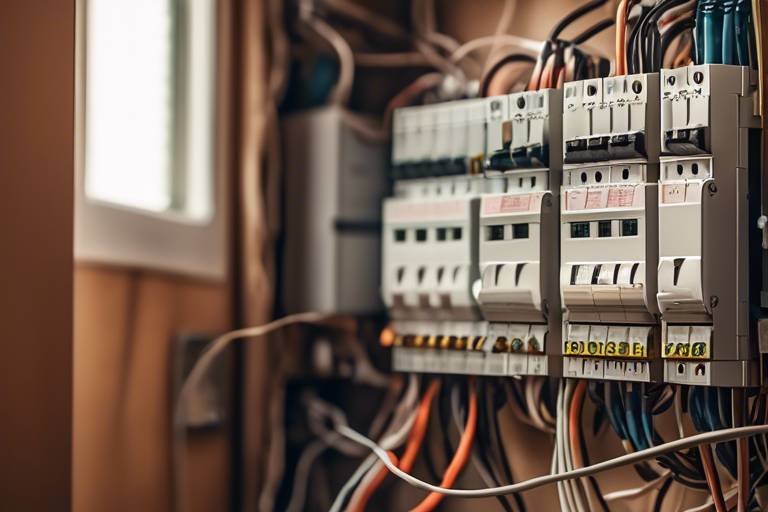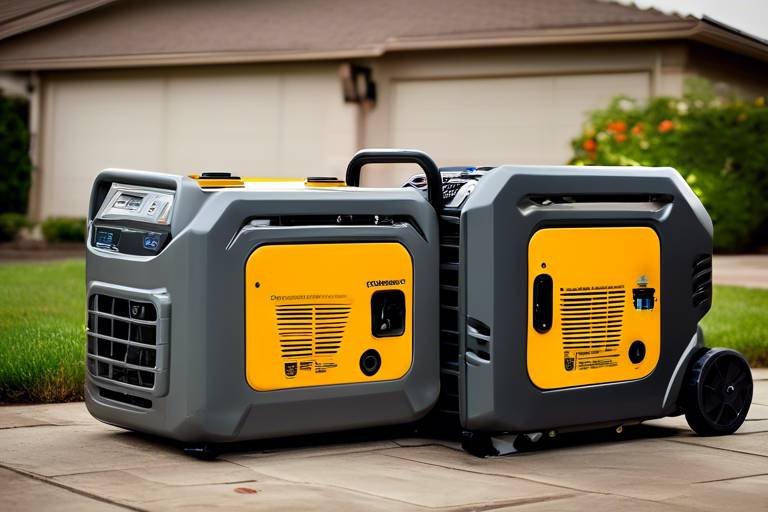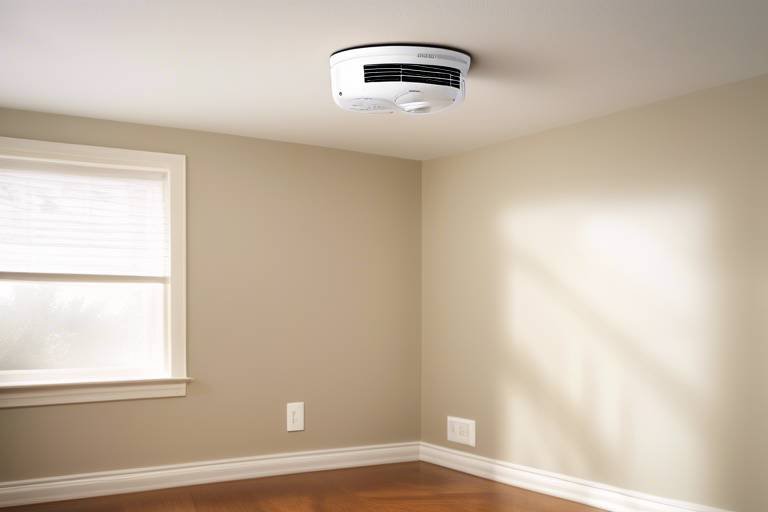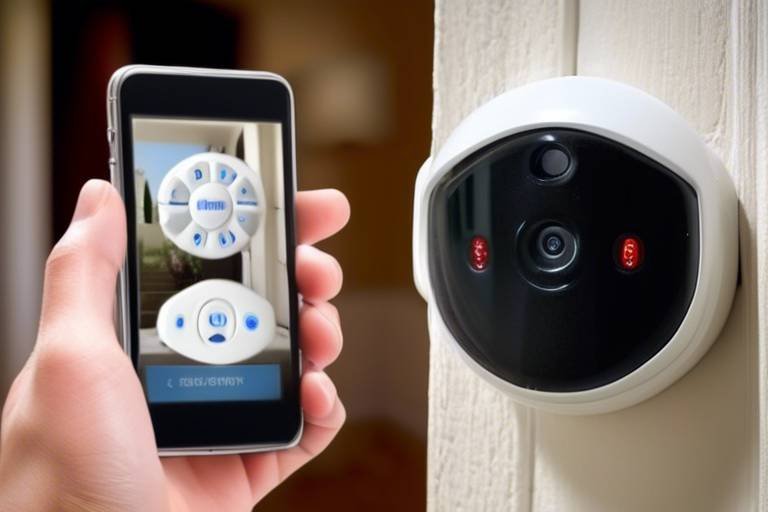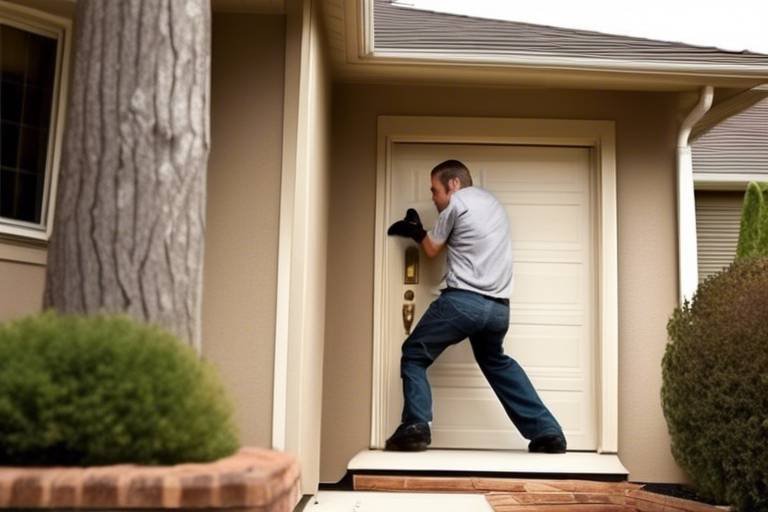Home Security and Safety Tips for Pet Owners
This article provides essential tips for pet owners to enhance home security and ensure the safety of their furry friends. Learn practical strategies to protect both your home and pets effectively. As pet owners, we often think about our furry companions' comfort and happiness, but we must also prioritize their safety. After all, a secure home is a happy home, not just for us but for our pets too. So, let’s dive into some crucial tips that will help you create a safer environment for your beloved animals.
A solid foundation in home security is crucial for pet owners. Imagine your home as a castle, and your pets as the royalty residing within. Just as castles have strong walls and guards, your home needs reliable security measures to keep unwanted intruders at bay. Start by ensuring that all doors and windows are fitted with sturdy locks. Consider investing in a good alarm system that can alert you to any disturbances. Additionally, surveillance cameras can act as your eyes when you're not home, allowing you to monitor your pets and the surroundings. With these basic security measures in place, you can enjoy peace of mind knowing that your furry friends are safe.
Developing a security plan tailored to your pets' needs is vital. Think of it as crafting a personalized safety net for your furry companions. Begin by assessing your home and identifying potential risks that could affect your pets. For example, if you have a dog that loves to dig, you’ll want to ensure your backyard is securely fenced. Incorporate pet-friendly features into your security plan, such as ensuring that your pets have a safe space away from windows to avoid any potential escape routes. By weaving your pets into your overall home security strategy, you’ll create a cohesive plan that protects everyone in your household.
Recognizing weak points in your home can help prevent security breaches. Just like a superhero identifies their weaknesses to become stronger, you need to pinpoint the vulnerabilities in your home. Common areas to focus on include:
- Windows and Doors: These are primary entry points for intruders. Ensure all windows and doors are equipped with high-quality locks and consider using security bars or window sensors.
- Fencing and Outdoor Safety: Evaluate your fencing for any gaps or weaknesses that could allow pets to escape or intruders to enter.
By addressing these vulnerabilities, you can create a safer environment for your pets and deter potential intruders.
Windows and doors are primary entry points for intruders. To secure these areas while ensuring your pets can still enjoy their environment, consider installing window locks and using reinforced glass. You might also want to use pet-proof screens that allow fresh air in without compromising security. Additionally, consider placing furniture near windows to deter your pets from jumping or climbing out, keeping them safe and sound indoors.
A secure outdoor space is essential for pet safety. Assess your fencing and look for any gaps or areas that could be easily breached. A well-maintained fence should be tall enough to prevent jumping and deep enough to prevent digging. If you have a dog that loves to escape, consider installing a double-gated system. This ensures that even if one gate is accidentally left open, your pet remains secure.
Technology can significantly enhance your home security. With the rise of smart home devices, keeping an eye on your pets has never been easier. Consider investing in smart cameras that allow you to monitor your pets in real time. Some devices even offer two-way audio, so you can talk to your pets when you're away. Additionally, smart doorbells can alert you to visitors and potential intruders, giving you an added layer of security. Using these technologies not only keeps your home secure but also provides peace of mind while you’re away.
Being prepared for emergencies is crucial for pet owners. Just like you would prepare a first aid kit for yourself, creating an emergency plan for your pets is equally important. This includes establishing evacuation routes, identifying pet-friendly shelters, and having a go-bag ready with essential supplies such as food, water, and medications. In times of crisis, your pets depend on you to keep them safe, so being proactive in your planning can make all the difference.
Understanding basic first aid for pets is essential for any pet owner. Just as you would know how to treat a scrape on your child, being equipped with the knowledge to handle minor injuries in your pets can save lives. Familiarize yourself with essential first aid techniques, such as how to perform CPR on a dog or cat, and keep a pet first aid kit handy. Regular check-ups with your veterinarian can also help catch any health issues early, ensuring your pets remain safe and healthy.
Training your pets can enhance their safety and security. Think of it as giving them the tools they need to navigate the world safely. Teaching basic commands such as "come," "stay," and "leave it" can prevent dangerous situations. Socialization is equally important; exposing your pets to different environments and people can help them become well-adjusted and less likely to react negatively in unfamiliar situations. Remember, a well-trained pet is not only safer but also more enjoyable to be around.
Proper socialization can prevent behavioral issues that may compromise safety. Just as we learn to interact with others, pets need the same opportunities to learn how to behave in various situations. Take your pets for walks in different neighborhoods, invite friends over, and expose them to various sounds and experiences. This helps them build confidence and reduces the likelihood of fear-based reactions that could lead to dangerous situations.
Q: How can I make my home more secure for my pets?
A: Start with basic security measures like strong locks, alarms, and surveillance cameras. Also, assess your home for vulnerabilities, especially around windows and doors.
Q: What should I include in my pet's emergency kit?
A: Your pet's emergency kit should include food, water, medications, a leash, a first aid kit, and any comfort items like toys or blankets.
Q: How can I train my pet for safety?
A: Focus on basic commands and socialization. Regular training sessions and exposure to different environments can help your pet respond appropriately in various situations.
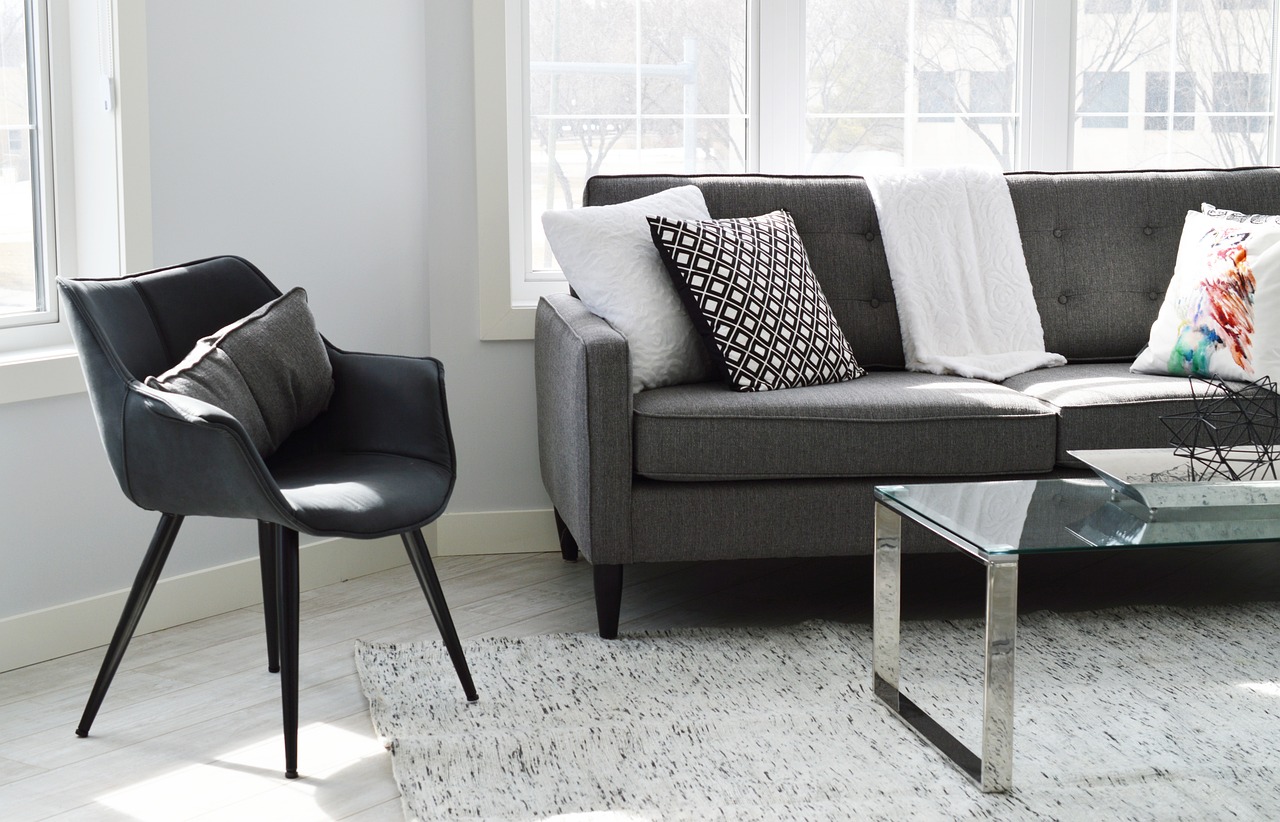
Understanding Home Security Basics
When it comes to ensuring the safety of your furry friends, a solid foundation in home security is absolutely crucial. After all, your pets rely on you for protection, just as much as you rely on them for companionship. So, what are the essential security measures every pet owner should consider? Let's dive into the basics!
First off, it's important to understand that home security is not just about locking your doors and windows. While those are certainly important steps, there’s a whole world of security measures that can help safeguard your home and keep your pets safe from potential threats. Think of your home as a fortress, and every fortress needs strong walls, effective surveillance, and an alarm system to alert you of any breaches.
Here are some fundamental components to consider when enhancing your home security:
- Locks: Invest in high-quality locks for your doors and windows. Deadbolts are a great option, as they provide an extra layer of security.
- Alarms: A reliable alarm system can deter intruders and alert you if someone tries to break in. Consider systems that allow you to monitor your home remotely.
- Surveillance Cameras: Installing cameras around your property can help you keep an eye on your pets and your home. Many modern systems offer live feeds right to your smartphone!
But wait, there’s more! It's also wise to consider the layout of your home. Are there any blind spots where an intruder could sneak in unnoticed? Regularly assess your surroundings and make adjustments as needed. For instance, ensure that shrubs and trees are trimmed back so they don’t provide cover for someone looking to break in.
Moreover, it's essential to educate yourself about your local area. Are there neighborhoods with higher crime rates? Knowing this can help you make informed decisions about your security measures. You might even want to connect with your neighbors to establish a neighborhood watch program. After all, there’s safety in numbers!
Lastly, always remember that home security is an ongoing process. Regularly inspect your security systems, update your locks if necessary, and keep up with the latest technology trends. By staying proactive, you not only protect your home but also create a safer environment for your beloved pets.
In summary, understanding the basics of home security is not just an option; it’s a necessity for pet owners. By investing in solid locks, alarms, and surveillance systems, and by staying vigilant about your surroundings, you can create a safe haven for your furry companions. So, are you ready to take the first step towards a more secure home?

Creating a Pet-Friendly Security Plan
When it comes to protecting our beloved furry friends, creating a pet-friendly security plan is more than just a good idea—it's essential! Think of your home as a fortress, and your pets as its most cherished treasures. Just like any fortress, you need a solid strategy in place to keep those treasures safe from harm. So, how do you build this fortress? Well, let’s dive into some practical steps that will not only enhance your home security but also ensure that your pets feel safe and comfortable.
First off, consider your pets' daily routines and behaviors. Do they tend to wander off when the door is ajar? Are they skittish during storms or loud noises? Understanding their habits can help you tailor your security measures. For instance, if your dog bolts for the door whenever someone rings the bell, you might want to install a secondary latch that’s out of their reach. This is a simple yet effective way to keep both your pets and your home secure.
Next, think about the layout of your home. Where do your pets spend the most time? Do they have access to areas that might be dangerous if an intruder were to enter? Mapping out these areas can help you identify where to focus your security efforts. Consider using baby gates to restrict access to certain rooms or areas, especially if there are potential hazards like stairs or heavy furniture that could tip over.
Incorporating surveillance technology into your plan can also be a game changer. Many modern security systems come equipped with cameras that allow you to monitor your home in real-time. Imagine being at work and checking in on your pets via your smartphone! This not only gives you peace of mind but also allows you to intervene if something seems off. Additionally, some systems even have motion sensors that can alert you if your pet is trying to escape or if an unfamiliar presence is detected.
Another important aspect of your pet-friendly security plan is ensuring that your outdoor space is secure. This means assessing your fencing and outdoor barriers. A well-maintained fence can be a strong deterrent against intruders and keep your pets safe from wandering off. Make sure there are no gaps or weak points where your pets could squeeze through. If you have a garden, consider adding a lockable gate to prevent unwanted visitors from entering your yard.
Lastly, don't forget to involve your pets in your security plan! Training them to respond to certain commands can be incredibly beneficial. For example, teaching your dog to stay or go to a designated safe area when someone knocks can help keep them calm and secure. It’s all about creating a safe environment where your pets feel protected while you rest easy knowing you’ve taken the necessary precautions.
In summary, creating a pet-friendly security plan involves understanding your pets’ behaviors, assessing your home layout, leveraging technology, securing outdoor spaces, and incorporating training. By taking these steps, you can build a fortress that not only protects your home but also keeps your furry friends safe and sound.

Identifying Vulnerable Areas
When it comes to keeping your pets safe, one of the first steps is in your home. Think of your home as a fortress, and just like any fortress, it has weak points that can be exploited. By recognizing these areas, you can take proactive measures to bolster your home’s defenses and ensure your furry friends are protected from potential threats. So, let’s dive into some common vulnerabilities and how to address them effectively.
First and foremost, consider the entry points. Windows and doors are the most obvious access points for intruders, but they can also pose risks for curious pets. For instance, a slightly ajar window might seem harmless, but it could be an invitation for your adventurous cat or small dog to escape. To mitigate this risk, make sure all windows have secure locks and consider installing window screens that are pet-proof. Additionally, ensure that your doors are equipped with sturdy deadbolts and that you always check them before leaving home.
Next, let’s talk about fencing and outdoor areas. If you have a yard, it’s essential to evaluate your fencing regularly. A fence that’s too low or has gaps can be an open invitation for your pets to wander off or for unwanted visitors to come in. Here are a few tips to improve your outdoor safety:
- Inspect your fence for any weak spots or damage.
- Ensure that the height of your fence is adequate for your pet’s jumping ability.
- Consider adding anti-climb features if you have particularly agile pets.
Another often-overlooked area is garages and sheds. These spaces can harbor hazardous materials such as chemicals, sharp tools, or even small openings that could allow pets to escape. Make sure to keep these areas locked and organized, and store any potentially dangerous items out of reach. It’s also a good idea to check for any gaps in the structure that could allow your pet to slip out.
Finally, don’t forget to assess your home’s interior layout. Cluttered spaces can pose risks for pets, especially if they are prone to knocking things over or getting stuck in tight spots. Create a pet-friendly environment by keeping pathways clear and ensuring that heavy objects are secured. This way, you reduce the chances of accidents, and your pets can roam freely without getting into trouble.
In summary, by taking the time to identify and address vulnerable areas in your home, you can create a safer environment for both your pets and your family. Just as you would fortify a castle against invaders, fortifying your home against potential risks ensures that your beloved companions remain secure and sound. Remember, a little prevention goes a long way in keeping your furry friends safe!
Q: What should I do if I find a vulnerable area in my home?
A: Take immediate action to secure the area, whether that means fixing a broken window, reinforcing a fence, or organizing clutter. The sooner you address the vulnerability, the safer your pets will be.
Q: How can I train my pets to stay safe at home?
A: Training your pets to respond to commands and cues can significantly enhance their safety. Consider teaching them commands like "stay" and "come," which can help keep them from wandering into dangerous areas.
Q: Are there specific technologies that can help monitor vulnerable areas?
A: Yes! Smart home devices such as security cameras, motion detectors, and smart locks can help you monitor your home and keep an eye on your pets, even when you’re not there.

Windows and Doors
When it comes to home security, are your first line of defense. Think of them as the gateways to your sanctuary; if they’re not secure, you're leaving your furry friends vulnerable to potential intruders. Each window and door in your home should be treated with the utmost care, ensuring they are not only functional but also fortified against unwanted access. You wouldn’t leave your front door wide open, would you? So, let’s dive into some effective strategies to enhance the security of these critical points.
First off, consider installing high-quality locks on all your doors and windows. Standard locks can be easily picked or broken, so investing in deadbolts or smart locks can make a significant difference. A smart lock, for example, allows you to monitor and control access remotely, giving you peace of mind when you're away from home. It's like having an extra pair of eyes watching over your beloved pets!
Next, let’s talk about window security. Many pet owners overlook this aspect, but unsecured windows can be a major vulnerability. Here are some tips to keep your windows secure while still allowing your pets to enjoy the view:
- Install window locks or security bars to prevent easy access from the outside.
- Consider using shatter-resistant glass or window film that can deter break-ins.
- Keep your windows closed or use screens when letting in fresh air, especially if your pets like to explore.
Moreover, consider the placement of your furniture. If you have furniture near windows that can be easily climbed, it’s time to rearrange! Keeping furniture away from windows can prevent your pets from getting too close to unsecured areas, thus reducing the risk of escape or injury.
Lastly, don't forget about your sliding doors. These can be particularly vulnerable if they are not properly secured. Ensure that the sliding mechanism is functioning correctly and consider adding a security bar or a dowel in the track to prevent the door from being opened from the outside. It’s a simple yet effective way to add an extra layer of protection.
In conclusion, securing your windows and doors is not just about protecting your home; it’s about ensuring the safety of your pets. By taking these proactive measures, you can create a safe haven for your furry friends, allowing them to roam freely without the constant worry of potential threats. Remember, a secure home is a happy home!
Q: What type of locks are best for windows?
A: High-quality window locks, such as sliding locks or sash locks, are ideal. Consider shatter-resistant glass for added security.
Q: How can I prevent my pets from escaping through open windows?
A: Use window screens and keep windows closed when not in use. You can also install locks that only allow the window to open a few inches.
Q: Are smart locks worth the investment?
A: Absolutely! Smart locks offer convenience and enhanced security features, allowing you to monitor access to your home remotely.
Q: What should I do if I suspect a security issue with my windows or doors?
A: Have a professional assess your home’s security and make necessary upgrades to locks, frames, and glass.

Fencing and Outdoor Safety
When it comes to ensuring the safety of your furry companions, fencing and outdoor security play a pivotal role. Think of your yard as a fortress; it needs to be well-guarded to keep your pets safe from potential dangers and to prevent them from wandering off. A sturdy fence not only protects your pets from outside threats but also keeps them from escaping into the unknown. But what makes a fence truly secure?
First and foremost, consider the height and material of your fence. A fence that is too low might be an easy hurdle for an energetic dog, while flimsy materials like wood might not withstand the test of time or curious paws. Ideally, aim for a fence that is at least six feet tall, constructed from durable materials such as vinyl or chain link. These options provide both strength and longevity, ensuring your pets remain safe within your yard.
Moreover, it’s essential to examine the gaps at the bottom of your fence. Even the most robust fence can be compromised if there are spaces that allow your pets to squeeze through. Regularly inspect your fencing for signs of wear and tear, and fill any gaps with soil or gravel to prevent escapes. You might also want to consider adding a concrete footer to the base of your fence; this can thwart digging attempts by determined pets.
Another critical aspect of outdoor safety is the gates. Gates are often the weakest link in your security chain. Ensure that your gates are not only sturdy but also equipped with reliable locks. A simple latch might not be enough if you have a clever pet who can figure out how to open it. Consider using a double latch system or a lock that requires a key for added security.
It’s also wise to think about the surroundings of your yard. Overhanging branches can provide a climbing aid for adventurous pets, potentially leading them to escape. Trim any low-hanging branches and keep the area around your fence clear of debris that could be used as a stepping stone. Additionally, be mindful of any nearby wildlife that might attract your pets to the fence line. If your yard is a haven for rabbits or squirrels, your pets may be tempted to dig or jump to chase them.
Finally, consider installing security cameras or motion sensor lights in your outdoor area. These devices not only deter potential intruders but also allow you to monitor your pets when they are outside. You can keep an eye on their behavior and ensure they are safe, even when you are not physically present. In today’s tech-savvy world, integrating smart technology into your home security strategy can provide peace of mind.
In summary, creating a safe outdoor environment for your pets requires a combination of a strong fence, secure gates, and regular maintenance. By taking the time to fortify your yard and keep it free of hazards, you can enjoy the outdoors with your pets without worry. After all, a secure home is a happy home!
- What type of fence is best for dogs?
Vinyl or chain link fences are often recommended due to their durability and height. - How high should a fence be to keep dogs in?
A fence should ideally be at least six feet tall to prevent most dogs from jumping over. - How can I prevent my dog from digging under the fence?
Installing a concrete footer or burying chicken wire at the base of the fence can help deter digging. - Are there any outdoor hazards I should be aware of?
Yes, be cautious of overhanging branches, nearby wildlife, and unsecured gates that could pose risks to your pets.

Utilizing Technology for Safety
In today's fast-paced world, technology plays a pivotal role in enhancing our home security and ensuring the safety of our beloved pets. Imagine having the power to monitor your furry friends while you're away, all at the touch of a button! With the right tools, you can significantly reduce the anxiety of leaving your pets home alone. So, what are some of these innovative solutions that can help you keep your pets safe? Let's dive in!
First and foremost, smart surveillance cameras have revolutionized how we keep an eye on our homes and pets. These cameras allow you to check in on your pets via your smartphone, providing peace of mind when you’re out and about. Many models even come equipped with two-way audio, so you can talk to your pets and soothe them if they're feeling anxious. Isn't it comforting to know you can reassure your furry friend with just a few taps on your phone?
Moreover, smart doorbells are another fantastic addition to your home security arsenal. These devices not only alert you when someone approaches your door but also allow you to see who it is, even if you're not home. This feature can be especially useful for pet owners, as it helps you monitor deliveries and visitors without having to open the door, keeping your pets safe from unexpected encounters.
But that’s not all! Consider investing in a smart pet door. These high-tech doors can be programmed to only open for your pet, using a special collar key. This way, you can prevent unwanted animals from entering your home while allowing your pets to come and go freely. It’s like giving your pets a VIP pass to the backyard while keeping intruders at bay!
Additionally, there are numerous pet tracking devices available on the market today. These small gadgets can be attached to your pet's collar and will help you locate them if they wander off. Some devices even offer real-time tracking and activity monitoring, ensuring your pet is safe and healthy. Wouldn’t it be a relief to know exactly where your pet is at all times?
For those who love to stay organized, there are also home automation systems that integrate with various security devices. You can program your lights to turn on and off at specific times, creating the illusion that someone is home, which can deter potential intruders. You can even set up alerts to notify you if doors or windows are opened, ensuring that your pets are safe from any unexpected threats.
To wrap it up, utilizing technology for your home security not only safeguards your property but also ensures the well-being of your pets. With smart devices and systems at your disposal, you can create a secure environment that keeps both your home and furry friends safe. Embrace the digital age and enhance your home security with these innovative solutions!
- What are the best smart cameras for pet monitoring? There are many great options available, including the Arlo Pro, Ring Indoor Cam, and Furbo Dog Camera, each offering unique features tailored for pet owners.
- Can smart pet doors work with multiple pets? Yes, many smart pet doors can be programmed to recognize multiple collars, allowing all your pets to come and go freely.
- How do pet tracking devices work? Most pet trackers use GPS technology to provide real-time location updates, ensuring you always know where your pet is.
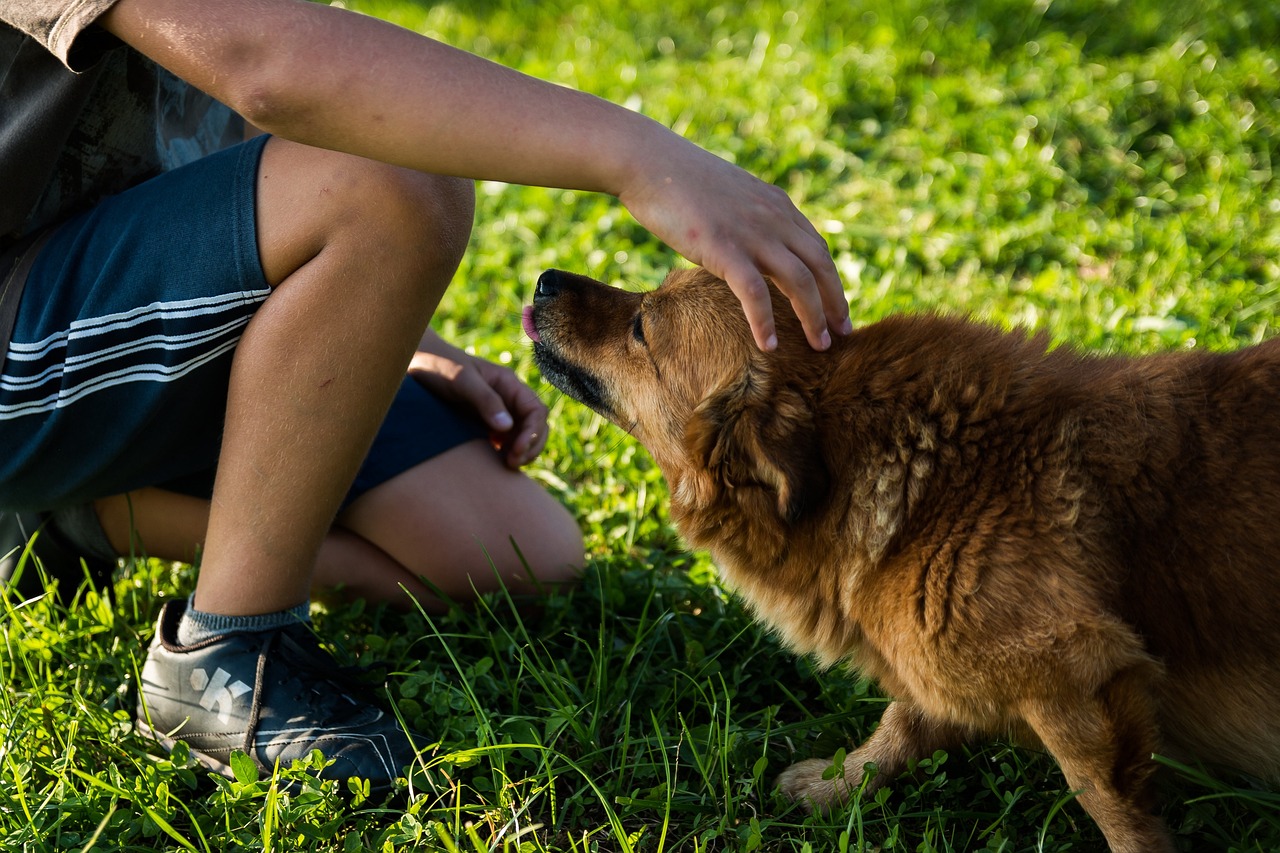
Emergency Preparedness for Pets
Being a responsible pet owner means being prepared for the unexpected. Emergencies can strike at any moment, whether it’s a natural disaster, a sudden illness, or even a house fire. The key to ensuring your furry friends’ safety lies in having a solid emergency preparedness plan in place. Imagine this: you’re at home, and suddenly, you hear a loud siren. Panic sets in, but because you’ve prepared, you know exactly what to do. You grab your pet’s emergency kit, check your evacuation routes, and reassure your furry companion. Sounds comforting, right?
First and foremost, it’s essential to create an emergency plan that includes your pets. This plan should outline evacuation routes, meeting points, and a list of pet-friendly shelters. Not all shelters accept pets, so it’s crucial to research and identify places that do. Having this information at your fingertips can save precious time during a crisis. In fact, consider creating a pet emergency contact list that includes your veterinarian’s number, local animal hospitals, and emergency pet services. Keep this list in a visible place, like on your fridge or in your phone, so you can access it quickly.
Additionally, you should assemble an emergency kit specifically for your pets. This kit should include the following items:
- Food and Water: Enough for at least three days, stored in airtight containers.
- Leash and Carrier: For safe transport during evacuations.
- First Aid Supplies: Basic first aid items, like bandages, antiseptic wipes, and any medications your pet may need.
- Identification: Ensure your pet has a collar with ID tags and consider microchipping as a permanent form of identification.
Once you have your supplies, it’s time to practice your emergency plan. Just like fire drills in school, practicing your evacuation plan with your pets can help them become familiar with the process, reducing anxiety when an actual emergency occurs. Make it a fun experience; reward your pets with treats for following commands during practice runs. This not only reinforces their training but also builds their confidence.
Furthermore, consider the unique needs of your pets. For example, if you have a senior dog or a cat with special health needs, ensure that your emergency kit includes any necessary medications and that you have a plan for their care during emergencies. Additionally, if you have multiple pets, practice how to manage them all at once. It’s essential to have a strategy in place to keep them calm and secure during stressful situations.
Lastly, don’t forget about your mental preparedness. Emergencies can be overwhelming, and knowing how to stay calm can make a significant difference. Practice deep breathing techniques and remind yourself that you’ve done the work to prepare. This mindset will not only help you manage your stress but also reassure your pets that everything will be okay.
Q1: What should I include in my pet's emergency kit?
A1: Your pet's emergency kit should include food, water, a leash, a carrier, first aid supplies, and identification tags. Don’t forget any medications your pet may need!
Q2: How can I find pet-friendly shelters during an emergency?
A2: Research local shelters ahead of time to find those that accept pets. Keep a list of these locations in your emergency preparedness plan.
Q3: How often should I practice my emergency plan with my pets?
A3: It’s a good idea to practice your emergency plan at least twice a year, or more frequently if you have new pets or if your current pets' needs change.

First Aid and Health Considerations
As a pet owner, it's not just about providing love and care; it's also about being prepared for emergencies that might arise. Understanding basic first aid for your furry friends can make a significant difference in critical situations. Think of it as having a safety net; when something unexpected happens, you want to be ready to act swiftly. Imagine your dog spraining a paw during a playful romp in the park or your cat getting a bit too curious and nibbling on something harmful. In these moments, your knowledge of first aid could be the difference between a quick recovery and a trip to the vet.
First aid for pets encompasses a range of techniques that can help stabilize their condition until professional help is available. Here are some essential first aid tips to keep in your back pocket:
- Assess the Situation: Before rushing in, take a moment to evaluate what happened. Is your pet in distress? Are there any visible injuries? This assessment will guide your next steps.
- Control Bleeding: If your pet is bleeding, apply gentle pressure with a clean cloth or bandage. Elevating the injured area can also help reduce blood flow.
- CPR and Rescue Breathing: Just like humans, pets can require CPR. If your pet is unresponsive and not breathing, you may need to perform CPR. Always consult a vet for proper techniques, as they can vary between species and sizes.
Additionally, keeping a well-stocked pet first aid kit at home is crucial. This kit should include items such as:
| Item | Purpose |
|---|---|
| Gauze and Bandages | To control bleeding and cover wounds. |
| Antiseptic Wipes | To clean wounds and prevent infection. |
| Tweezers | To remove splinters or ticks. |
| Thermometer | To check for fever (normal range is 100.5°F to 102.5°F). |
| Pet-Safe Pain Reliever | To alleviate pain until you can see a vet. |
Besides first aid, being aware of your pet's health is paramount. Regular check-ups with your veterinarian can help catch issues before they become serious. Vaccinations, parasite control, and dental care are all critical components of your pet's health regime. Just like how we feel our best when we take care of ourselves, your pets thrive when they receive proper medical attention. It's also beneficial to keep a record of your pet's medical history, including vaccinations and any medications they might be on. This information is invaluable during emergencies.
Lastly, don't underestimate the power of training. Teaching your pets basic commands can help you manage them during a crisis. For instance, if your dog knows the command “stay,” you can keep them in a safe spot while you assess a situation. Think of it as preparing for a dance; the better you practice, the smoother the performance.
In conclusion, being prepared with first aid knowledge and a solid understanding of your pet's health can empower you to handle emergencies effectively. Remember, your furry friends rely on you, and being their advocate means being prepared for anything life throws your way.
Q: What are the signs of an emergency in pets?
A: Signs include difficulty breathing, excessive bleeding, loss of consciousness, or any sudden change in behavior. If you notice any of these signs, seek veterinary assistance immediately.
Q: How often should I update my pet's first aid kit?
A: It's a good idea to check your pet's first aid kit every six months to replace expired items and ensure that everything is in working order.
Q: Can I use human medications on pets?
A: Never give your pet human medications without consulting your veterinarian. Many human medications can be toxic to animals.
Q: What should I do if my pet is injured?
A: Keep calm, assess the situation, and provide first aid if you can. Contact your veterinarian immediately for further instructions.

Training Your Pets for Safety
Training your pets is not just about teaching them tricks or commands; it's about ensuring their safety and security in various situations. Imagine your furry friend darting out the door when someone rings the bell—how can you prevent that? By implementing effective training techniques, you can help your pets respond appropriately to different scenarios, making them not only well-behaved but also safer. After all, a well-trained pet is a happy pet, and it can significantly reduce the risk of accidents or unwanted behaviors that could lead to dangerous situations.
One crucial aspect of training is to establish a solid foundation of commands. Basic commands like “sit,” “stay,” and “come” can be lifesavers in emergencies. For instance, if your dog is about to chase a squirrel into the street, a firm “stay” can prevent them from running into traffic. It’s essential to practice these commands regularly, ensuring your pet understands the importance of listening to you, especially in critical moments.
Moreover, socialization plays a significant role in keeping your pets safe. Exposing them to various environments, people, and other animals helps them develop confidence and reduces anxiety. Think of it as preparing them for life's unpredictable situations. By introducing your pet to different experiences, you’re not only enhancing their behavior but also equipping them with the skills they need to remain calm and collected in unfamiliar settings. This can be particularly beneficial in preventing fear-based reactions that could lead to escape attempts or aggressive behavior.
Another effective training technique is using positive reinforcement. This method involves rewarding your pet for desired behaviors, making them more likely to repeat those actions in the future. For example, if your dog stays calm during a visit from a stranger, rewarding them with a treat reinforces that behavior. This approach not only strengthens your bond but also encourages your pet to behave safely in various situations. Remember, patience is key. Training takes time, and consistency is crucial for success.
In addition to basic commands and socialization, consider teaching your pets specific safety skills. For instance, you can train them to go to a designated safe spot in your home during emergencies, such as a fire or a loud thunderstorm. This can provide them with a sense of security and help you manage the situation better. Creating a safe zone can be as simple as designating a corner of a room with their bed and some toys, making it a comforting space they can retreat to when needed.
Finally, don't forget to involve the entire family in the training process. Consistency across all family members is essential for effective training. If one person allows the pet to jump on the couch while another enforces the “off” command, it can confuse your pet and undermine the training efforts. Establishing clear rules and expectations within the household will help your pet understand what behaviors are acceptable, ultimately enhancing their safety and security.
Q: How long does it take to train my pet?
A: Training duration varies depending on the pet's age, breed, and previous experience. Generally, consistency and regular practice can lead to noticeable improvements within a few weeks.
Q: Can I train my pet myself, or should I hire a professional?
A: While many pet owners successfully train their pets on their own, hiring a professional can provide additional guidance, especially for more complex behaviors or issues.
Q: What if my pet doesn’t respond to commands?
A: Patience is key! If your pet isn't responding, consider adjusting your training methods. Ensure you're using positive reinforcement and that the environment is free from distractions.
Q: Is socialization really that important?
A: Absolutely! Socialization helps your pet feel comfortable in various environments and reduces anxiety, which can lead to safer behavior in unfamiliar situations.
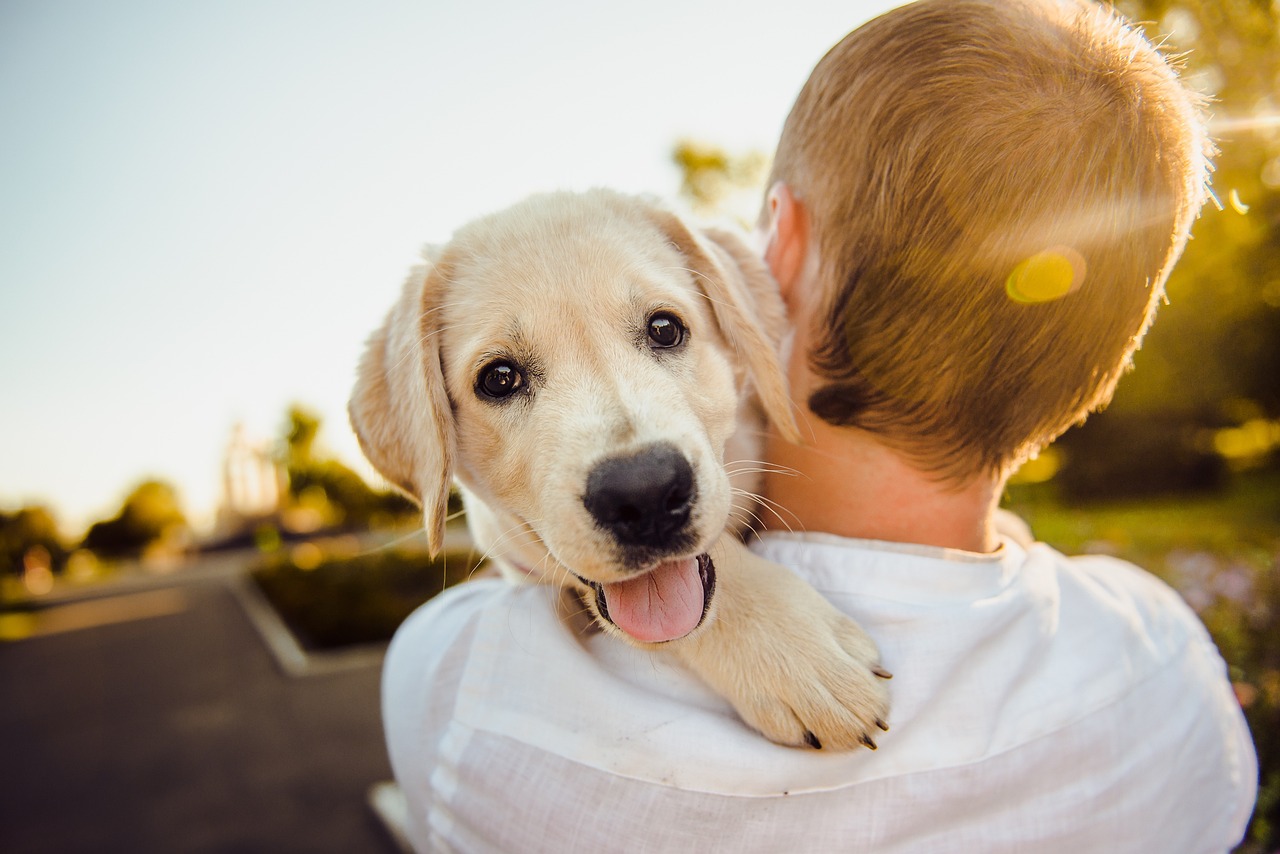
Socialization and Behavior
When it comes to ensuring the safety of your pets, socialization plays a pivotal role that you simply can't overlook. Think of it this way: just like humans, pets thrive in environments where they feel comfortable and secure. Socializing your furry friends helps them develop the skills they need to navigate the world around them, which can prevent unwanted behaviors that might put them in danger. Have you ever noticed how a well-socialized dog is less likely to react aggressively to strangers or other animals? That's the power of proper socialization!
One of the first steps in socializing your pet is to introduce them to a variety of people, places, and other animals. This process should begin when they are young, as puppies and kittens are more adaptable and open to new experiences. However, even older pets can benefit from a little extra exposure. The key is to do it gradually and positively. For instance, you might take your dog to a local park or a pet-friendly café where they can meet other dogs and people. This not only helps them become more confident but also strengthens your bond with them.
It's essential to monitor your pet's behavior during these interactions. If they seem anxious or fearful, it's important to take a step back and allow them to acclimate at their own pace. You can use positive reinforcement techniques, such as treats and praise, to reward calm behavior. This approach not only reinforces good behavior but also helps them associate new experiences with positive outcomes.
Another aspect of socialization is teaching your pet basic commands and cues. This is where training comes into play. Commands like "sit," "stay," and "come" are not just for show; they are vital for keeping your pet safe in various situations. For example, if your dog is about to run into the street, a simple "stay" command can prevent a potential disaster. Consistent training sessions can enhance their understanding and responsiveness, making them more reliable companions.
Moreover, consider enrolling your pet in group training classes or socialization groups. These settings provide controlled environments where pets can learn to interact with others under supervision. It’s a fantastic way to expose them to different breeds and personalities while also enhancing their social skills. You might even make some new friends along the way!
Let’s not forget the importance of understanding your pet's unique personality. Every animal is different, and what works for one might not work for another. Some pets are naturally more confident, while others may be shy or reserved. Tailoring your socialization approach to fit your pet's behavior can make a world of difference. For example, if your pet tends to be more anxious, you might want to limit interactions initially and gradually increase them as they become more comfortable.
In summary, socialization is a crucial component in ensuring your pet’s safety and well-being. By exposing your furry friend to a variety of experiences, teaching them commands, and understanding their individual needs, you can cultivate a well-adjusted pet that is not only safe but also a joy to be around. So, why not start today? The more you invest in your pet's socialization, the more rewarding your relationship will be!
- What is the best age to start socializing my pet? It's best to start socializing pets during their critical development period, which is typically between 3 to 14 weeks for puppies and kittens. However, older pets can still benefit from socialization.
- How can I tell if my pet is properly socialized? A well-socialized pet will be calm and relaxed in new situations, will not show excessive fear or aggression, and will respond positively to new people and animals.
- What if my pet is fearful of other animals? Take gradual steps to expose them to other pets, ensuring that each interaction is positive and controlled. Consider consulting a professional trainer if needed.
- Are group training classes effective? Yes, group training classes provide a controlled environment for socialization and learning, and they can be a great way for both you and your pet to meet others.
Frequently Asked Questions
- What are the basic home security measures I should consider as a pet owner?
As a pet owner, it's crucial to ensure your home is secure. Start with strong locks on doors and windows, install a reliable alarm system, and consider adding surveillance cameras. These measures not only protect your home but also keep your pets safe from potential intruders.
- How can I create a pet-friendly security plan?
Creating a pet-friendly security plan involves assessing your home’s layout and identifying areas that need extra attention. Incorporate your pets' routines into your security strategy, ensuring they have safe spaces to retreat to during emergencies while still maintaining security.
- What are common vulnerable areas in my home that I should address?
Common vulnerable areas include windows, doors, and fences. Ensure all entry points are secure, and check for any gaps in your fencing that could allow your pets to escape or intruders to enter. Regular maintenance and inspections can help keep these areas secure.
- How can technology enhance my home security?
Technology can play a significant role in enhancing home security. Smart cameras, motion detectors, and home automation systems can provide real-time monitoring and alerts. Additionally, pet-friendly apps can help you keep an eye on your furry friends while you’re away from home.
- What should I include in my emergency preparedness plan for pets?
Your emergency preparedness plan should include evacuation routes, a list of pet-friendly shelters, and a kit with essential supplies like food, water, medications, and first aid items. Practicing these plans with your pets can ensure they are familiar with the process during a crisis.
- What basic first aid knowledge should I have for my pets?
Basic first aid for pets includes knowing how to treat minor wounds, recognizing signs of distress, and understanding how to perform CPR on pets. Familiarize yourself with common health issues and have a first aid kit specifically for your pets to ensure you’re prepared for emergencies.
- How can I train my pets for safety?
Training your pets for safety involves teaching them commands that can help keep them secure, such as “stay,” “come,” and “leave it.” Regular socialization with other animals and people can also help your pets respond appropriately in various situations, reducing the risk of accidents or escapes.
- What role does socialization play in my pet’s safety?
Socialization is key to a pet's safety as it helps them become well-adjusted and confident in different environments. A well-socialized pet is less likely to react fearfully or aggressively, which can prevent dangerous situations both at home and outside.











